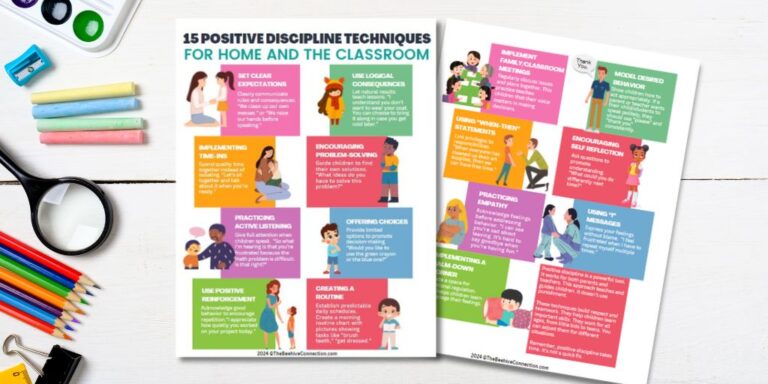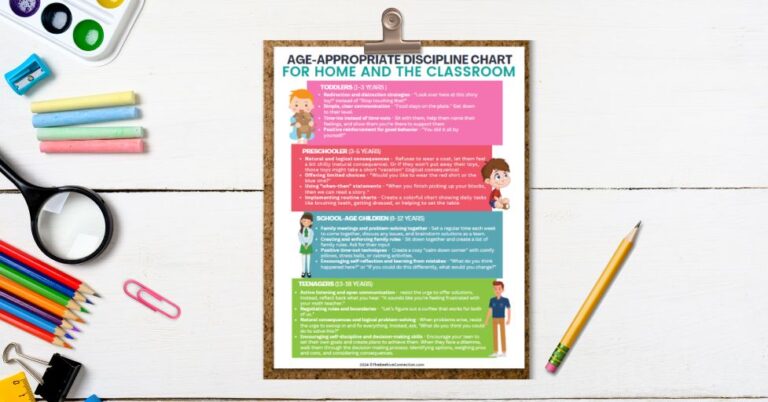Setting Boundaries for Kids in 2025 Using Positive Discipline Methods
Disclosure: This post may contain affiliate links, meaning I may get a small commission if you decide to make a purchase through my links, at no cost to you.

Setting Boundaries for Kids in 2024 Using Positive Discipline Methods
Parenting in 2024 is no walk in the park! With screens, social media, and a rapidly changing world, setting boundaries for kids has never been more crucial. But here’s the kicker: 73% of parents struggle with consistently enforcing rules (American Psychological Association, 2023).
Don’t worry, you’re not alone! In this guide, we’ll dive into the world of positive discipline and show you how to set healthy boundaries that stick. Get ready to transform your parenting game and create a harmonious home environment!
What is Positive Discipline
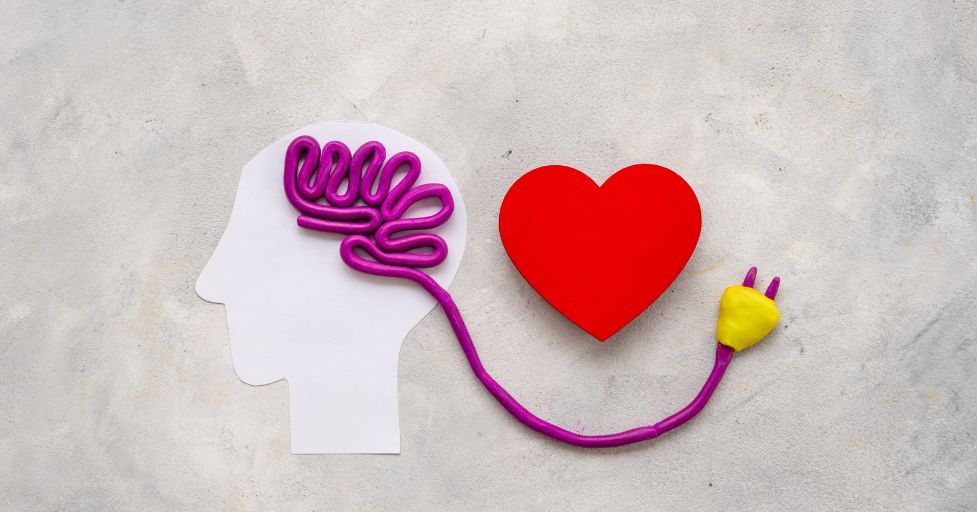
Alright, parents, children need positive discipline! You might be wondering, “What’s all the fuss about?” Well, this approach is revolutionizing how we think about parenting.
Positive discipline core principles
Positive discipline is like the Swiss Army knife of positive parenting techniques – versatile, effective, and oh-so-helpful. At its core, it’s about teaching and guiding our kids with respect, empathy, and strong mental health. Imagine a world where you can correct behavior without crushing spirits. That’s the magic of positive discipline!
The core principles are simple, yet powerful:
- Mutual respect (because it’s a two-way street, folks!)
- Understanding the belief behind the behavior (kids aren’t just tiny troublemakers)
- Effective communication (no mind-reading required)
- Discipline that teaches (not just punishes)
- Encouragement (because we all need a cheerleader sometimes)
Contrast positive discipline with punitive approaches
Now, let’s talk about the elephant in the room – punitive discipline. You know, the “Because I said so!” approach. While it might get short-term results, it’s like using a sledgehammer to hang a picture. Sure, the nail’s in the wall, but at what cost?
Positive discipline, on the other hand, is like having a heart-to-heart with your kid. It’s about connection, not correction. Instead of time-outs, we have time-ins. Rather than punishment, we focus on teaching and problem-solving. It’s the difference between teaching kids to be a rule-follower and nurturing a thoughtful, responsible human being.
The long-term benefits of positive discipline for child development
Here’s where it gets really exciting! The long-term benefits of positive discipline are like planting a seed that grows into a mighty oak. According to a study by the American Psychological Association, children raised with positive discipline techniques show higher levels of emotional intelligence, better problem-solving skills, and stronger parent-child relationships.
Positive discipline helps kids develop:
- Self-discipline (because let’s face it, we can’t follow them to college)
- Resilience (life’s gonna throw curveballs, and they’ll be ready)
- Empathy (creating little kindness warriors)
- Confidence (but not the “I’m-always-right” kind)
- Responsibility (goodbye, forgotten homework!)
As one wise parent once told me, “Positive discipline isn’t just about raising good kids; it’s about raising good adults.” And isn’t that what we’re all aiming for?
So, are you ready to embark on this positive discipline journey? Trust me, it’s not always easy (what in parenting is?), but the rewards are immeasurable. Your future self – and your kids – will thank you!
Check out our Positive Discipline Techniques PDF for home and the classroom
The Importance of Setting Boundaries for Kids in Child Development
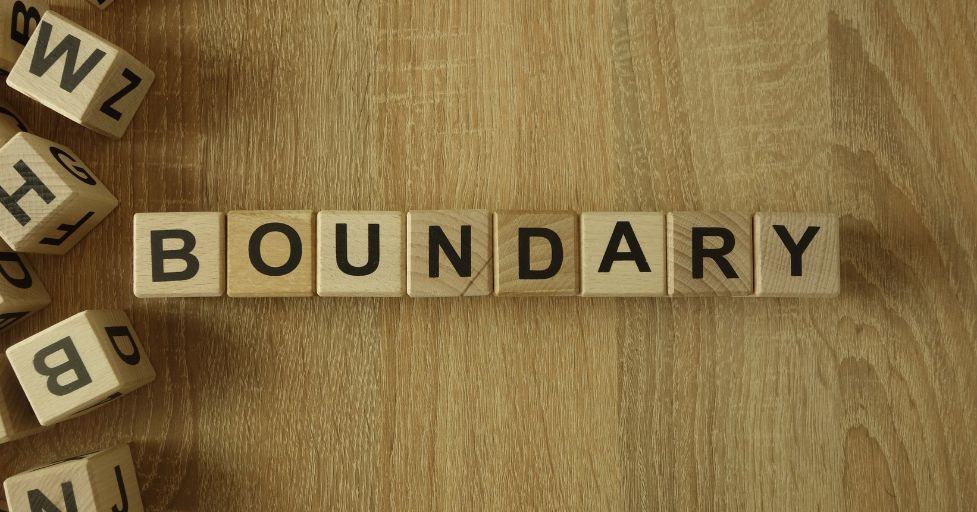
Let’s talk boundaries! No, not the kind that keep your neighbor’s dog out of your yard (though those are important too). We’re diving into the invisible lines that shape our kids’ worlds and help them grow into awesome adults. This is where the magic happens!
How boundaries contribute to a child’s sense of security
Picture this: You’re in a foreign country, driving on unfamiliar roads. There are no speed limits, no traffic signs, and no clear rules. Feels pretty scary, right?
That’s exactly how kids feel without boundaries! Children with no boundaries might have trouble controlling their actions, feeling confident, and making friends. This can lead to doing poorly in school, taking more risks, and having health problems.
As they grow up, they might struggle with respecting rules, building relationships, and handling jobs, which can even get them into legal trouble. To help prevent this, parents should set consistent rules, encourage good behavior, set a good example, and talk openly about why boundaries are important.
Boundaries are like the guardrails of childhood. They create a safe space where kids can explore, learn, and even make mistakes without feeling lost or overwhelmed. It’s like giving them a map and compass for life’s journey.
A study by the Journal of Child Psychology found that children with clear, consistent boundaries at home showed 40% lower anxiety levels compared to those with inconsistent or no boundaries.
The role of setting boundaries for kids in teaching self-regulation
Now, let’s chat about self-regulation – Self-regulation is the key to success in school, relationships, and life in general. Boundaries play a crucial role in teaching kids self-regulation. When parents set clear and consistent boundaries, kids learn what is expected of them, which helps them manage their behavior and emotions.
For example, having set bedtimes teaches kids the importance of a good night’s sleep, while rules about screen time help them balance fun and responsibilities. By following these boundaries, kids practice self-control and make better decisions.
Over time, they start setting their own boundaries, like deciding to finish homework before playing games. This process helps them understand their limits and build self-discipline, which is essential for their overall growth and success. Setting boundaries for kids provides structure and expectations, giving kids a framework to understand and manage their emotions and behaviors.
I remember when my youngest daughter was learning to ride a bike. At first, she needed physical boundaries – my hands on the seat, training wheels, a clear path. As she gained confidence, those physical boundaries became internalized skills. The same thing happens with emotional and behavioral boundaries!
The connection between clear boundaries and reduced behavioral issues
Clear boundaries aren’t just about making our lives easier (though let’s be honest, that’s a nice bonus). They’re directly linked to reduced behavioral issues.
Think about it: When kids know what’s expected of them, they’re less likely to test limits or act out. It’s not about squashing their spirit – it’s about channeling that energy in positive ways.
A fascinating study from the University of Minnesota found that children with consistent boundaries at home were 60% less likely to exhibit disruptive behaviors at school. That’s huge! It’s like we’re setting them up for success in every area of life.
But here’s the kicker – boundaries aren’t just about saying “no.” They’re about creating a safe space to say “yes” to exploration, creativity, and growth. It’s like giving our kids a launchpad for their dreams and ambitions!
So, next time you’re setting a boundary for kids, remember: You’re not just preventing chaos in your living room, you’re laying the foundation for a confident, self-regulated, and well-adjusted future adult. And that, my friends, is worth its weight in gold (or at least in unbroken vases and tantrum-free bedtimes)!
Key Strategies for Effectively Setting Boundaries for Kids
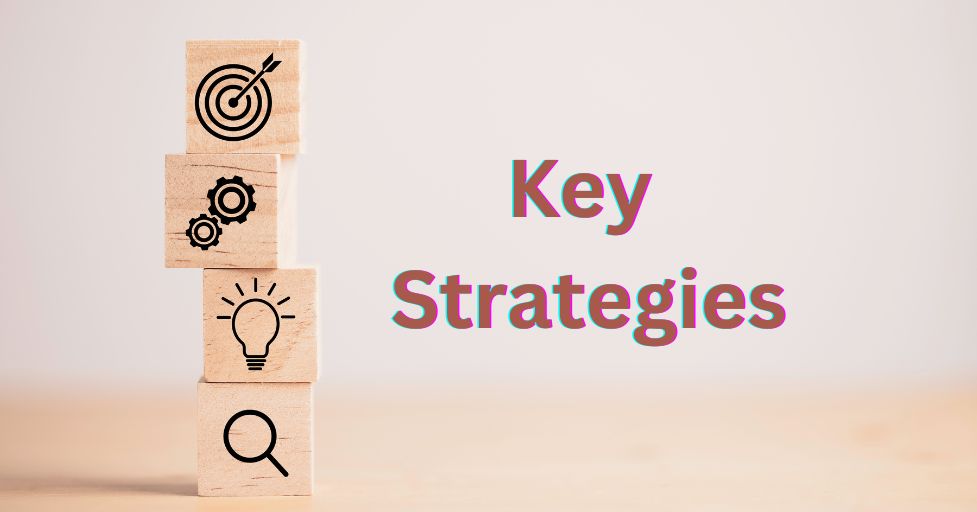
We’ve talked about why boundaries are important, but now let’s get down to the nitty-gritty. How do we actually set these magical limits that transform our wild little humans into responsible mini-adults?
Establish clear and age-appropriate boundaries and expectations
First things first: clarity is king! Kids aren’t mind readers (though sometimes I wish they were – it would make dinner time so much easier). We need to spell out our expectations in a way that makes sense for their age.
For the little ones, keep it simple and concrete. “We use gentle hands with the cat” is much clearer than “Be nice to animals.” For older kids, you can get more complex. “I expect you to complete your homework before screen time” gives them a clear goal and consequence.
According to child psychologist Dr. Laura Markham, author of Peaceful Parents Happy Kids, kids are 75% more likely to follow rules they help create. So why not turn boundary-setting into a family brainstorming session? You might be surprised at how reasonable kids can be when they feel heard!
Use positive reinforcement to encourage desired behaviors
Now, let’s talk about everyone’s favorite topic: rewards! No, I’m not suggesting you bribe your kids (though I won’t judge if you’ve resorted to that on a long car ride). But if you get our Travel Kit, road trips would be a breeze, I’m talking about the power of positive reinforcement.
Catch your kids being good and make a big deal out of it! “Wow, you put your toys away without being asked. That’s so helpful!” It’s like giving their good behavior a standing ovation. Trust me, they’ll want an encore.
A study by the American Psychological Association found that children who receive regular positive reinforcement show a 40% increase in desired behaviors. That’s like getting a 40% off coupon for parenting struggles!
Implement natural and logical consequences for setting boundaries for kids and violations
Okay, but what about when they inevitably test those boundaries? (Because let’s face it, kids are professional boundary-pushers.) This is where natural and logical consequences come in – they’re like the secret sauce of effective discipline.
When it comes to setting boundaries for kids and violations or those boundaries, natural consequences are the “I told you so” of the parenting world, without actually saying it of course. Didn’t want to wear a coat? Hello, cold fingers! Logical consequences, on the other hand, are the ones we create that directly relate to the behavior. Refused to clean up your toys? No playing with them tomorrow.
The key is to make the consequence relate to the action. It’s not about punishment; it’s about learning. As the saying goes, “Experience is the best teacher.” We’re just setting up the classroom!
Maintain consistency in enforcing boundaries
Consistency! It’s the glue that holds this whole boundary-setting operation together. I know, being consistent is harder than getting a toddler to eat broccoli. But trust me, it’s worth it.
Inconsistency is like a rollercoaster for kids – exciting in the moment, but ultimately disorienting and a little nauseating. When we’re consistent, we’re giving our kids a stable foundation to build upon.
A study in the Journal of Applied Developmental Psychology found that consistent parenting practices led to a 60% reduction in problem behaviors over a year. That’s like getting a superpower that zaps away tantrums. Remember, we’re playing the long game here. Some days will be harder than others but stay the course.
Raising amazing kids requires setting clear expectations, positive reinforcement, logical consequences, and consistency. Now let’s move on to appropriate ways for setting boundaries for kids.
Communicating Boundaries with Empathy and Respect
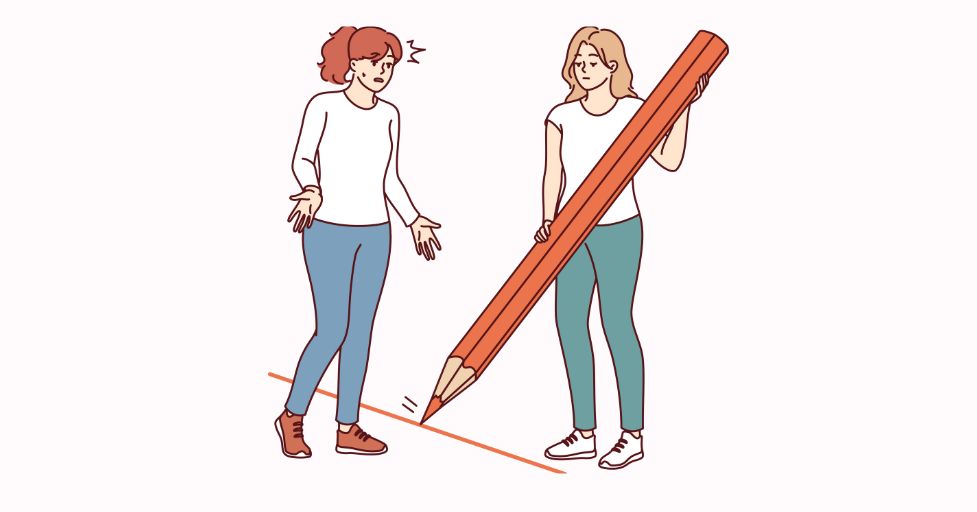
Let’s face it, folks – setting boundaries for kids isn’t always a walk in the park. Sometimes it feels more like trying to negotiate with a tiny dictator who has an army of stuffed animals at their command!
But don’t worry, communication with empathy and respect is the secret sauce in positive parenting. It’s like adding a spoonful of sugar to help the medicine go down, except in this case, the sugar is actually good for everyone involved! When setting boundaries for kids, choosing empathy and respect go a long way in getting respect back.
Practice active listening to understand your child’s perspective
First up: active listening. Now, I know what you’re thinking – “I already listen to my kids. All. Day. Long.” But hear me out (see what I did there?). Active listening is like putting on superhero hearing aids. It’s not just about hearing the words; it’s about tuning into the feelings behind them.
Try this: Next time your little one is in the middle of a meltdown over wearing socks (because apparently, socks are the root of all evil), take a deep breath and really listen. Get down on their level, make eye contact, and say, “It sounds like you’re really upset about wearing socks. Can you tell me more about that?” You might be surprised at what you learn!
Here’s a stat for you: According to a study in the Journal of Child Psychology, children whose parents regularly practice active listening show a 35% increase in emotional intelligence. That’s like giving your kid a superpower for navigating life’s ups and downs!
Use “I” statements to express your feelings and needs
Now, let’s talk about the magic of “I” statements. No, I’m not suggesting we all become narcissists. “I” statements are like a secret code for expressing feelings without pointing fingers. Instead of “You never listen!” try “I feel frustrated when I have to repeat myself.”
It’s not just about avoiding blame – it’s about modeling healthy communication. When we use “I” statements, we’re teaching our kids how to express their own feelings in a constructive way. It’s like planting seeds for future therapy bills… that they won’t need!
And get this – a study by the Family Communication Institute found that families who regularly use “I” statements report a 50% decrease in escalated conflicts. That’s like waving a magic wand over your dinner table arguments!
Offer choices within established boundaries to promote autonomy
Last but not least, let’s chat about choices. Kids crave control like I crave chocolate – intensely and somewhat desperately. But here’s the trick: we can give them a sense of control within our established boundaries.
Instead of “It’s bedtime, go brush your teeth,” try “It’s bedtime. Would you like to brush your teeth before or after we read a story?” Boom! You’ve just turned a potential battle into a collaborative decision-making process.
This isn’t just about avoiding tantrums (though that’s a nice bonus). It’s about fostering independence and decision-making skills. We’re raising future adults, after all, not perpetual children!
Here’s a fun fact: A study in the Journal of Positive Psychology found that children who are regularly offered choices within parenting boundaries show a 40% increase in self-confidence by age 10. That’s like giving your kid a confidence booster shot!
When setting boundaries with children and implementing them by active listening, “I” statements, and offering choices – your children will begin respecting boundaries. Remember, it’s not about perfect execution every time (because let’s be real, perfection and parenting go together like peanut butter and pickles). It’s about progress, connection, and growing together.
Addressing Common Challenges in Boundary Setting
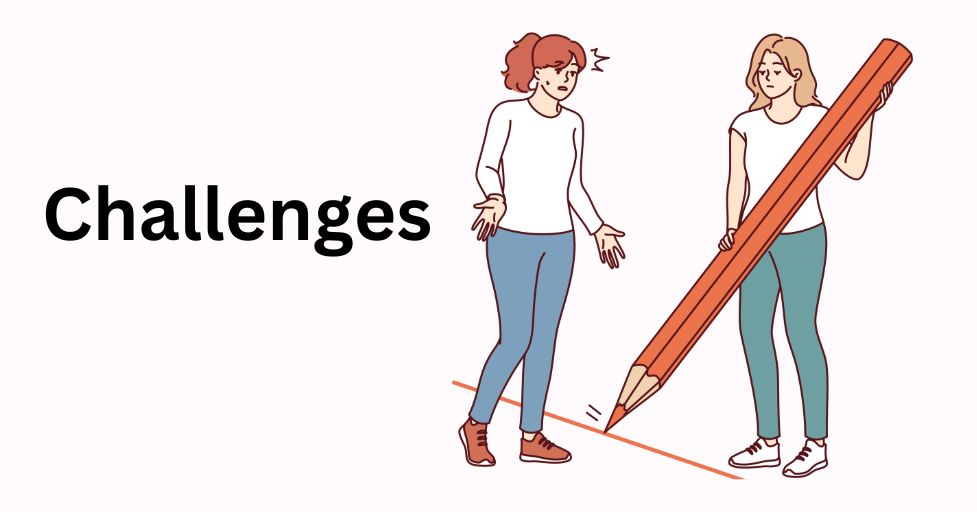
Alright, let’s tackle the elephant in the room – the challenges in kids learning boundaries! Because let’s face it, if setting boundaries for toddlers were as easy as pie, we’d all be parenting experts by now. But here are some strategies that’ll make you feel like you’ve unlocked the secret level in the parenting video game.
How to Handle boundary testing and push-back from children
First up: boundary testing. It’s like our kids have an internal radar for our limits, and they’re determined to push every single one. But according to child psychologist Dr. Laura Markham, kids who test boundaries, even healthy boundaries aren’t trying to drive us crazy (though it might feel that way). They’re actually seeking reassurance that our love is unconditional!
So, what’s a frazzled parent to do? Stay calm and carry on, my friends! When your little boundary tester is in full-on rebellion mode, take a deep breath and remind yourself: “This isn’t personal. It’s just part of growing up.” Then, restate the boundary clearly and confidently. “I understand you want to stay up late, but bedtime is at 8 PM because sleep is important for your growing body.”
Remember, consistency is key. It’s like building a muscle – the more you exercise it, the stronger it gets. And trust me, your future self will be grateful when your teenager actually respects your rules!
Navigate co-parenting differences in boundary setting
Now, let’s dive into the tricky waters of co-parenting. It’s like trying to choreograph a dance when your partner is listening to a different song. But don’t worry, I’ve got some moves for you!
First things first: communication is your best friend. Set aside regular “parenting powwows” to discuss the parents setting boundaries and expectations. And here’s a pro tip: frame it as a team effort. “We’re in this together” sounds a lot better than “You’re doing it all wrong!”
According to a study in the Journal of Family Psychology, co-parents who present a united front on boundaries report 60% fewer behavioral issues in their children. That’s like getting a two-for-one deal on parenting success!
But what if you and your co-parent just can’t see eye to eye? Remember, it’s okay to have different styles as long as you’re consistent in your own approach. Kids are adaptable – they can learn from these boundary setting examples: “At Mom’s house we do X, and at Dad’s house we do Y.” Just make sure you’re not undermining each other, and you’ll be golden.
Adapt boundaries as children grow and develop
Last but not least, let’s talk about the ever-changing landscape of child development. Just when you think you’ve got this parenting thing figured out, your kid hits a new stage and it’s back to square one!
Fortunately, boundaries aren’t set in stone. They’re more like Play-Doh – meant to be molded and adapted as your child grows. What worked for your 5-year-old might be totally ineffective (and potentially eye-roll inducing) for your 12-year-old.
The key is to stay flexible and keep the lines of communication open. As your kids get older, involve them in the boundary-setting process. You might be surprised at how reasonable they can be when they feel heard and respected.
And get this – a study by the American Academy of Pediatrics found that families who regularly reassess and adapt their boundaries report 45% higher levels of family satisfaction. It’s like giving your family dynamic a regular tune-up!
Handling push-back, navigating co-parenting, and adapting as your kids grow will help you tackle the toughest boundary challenges. Remember, it’s not about being perfect. It’s about being present, being consistent, and being willing to grow alongside your kids. Now set those boundaries with the confidence of a tightrope walker who just discovered they’ve been wearing a safety harness all along!
Teaching Problem-Solving Skills Within Setting Boundaries for Kids
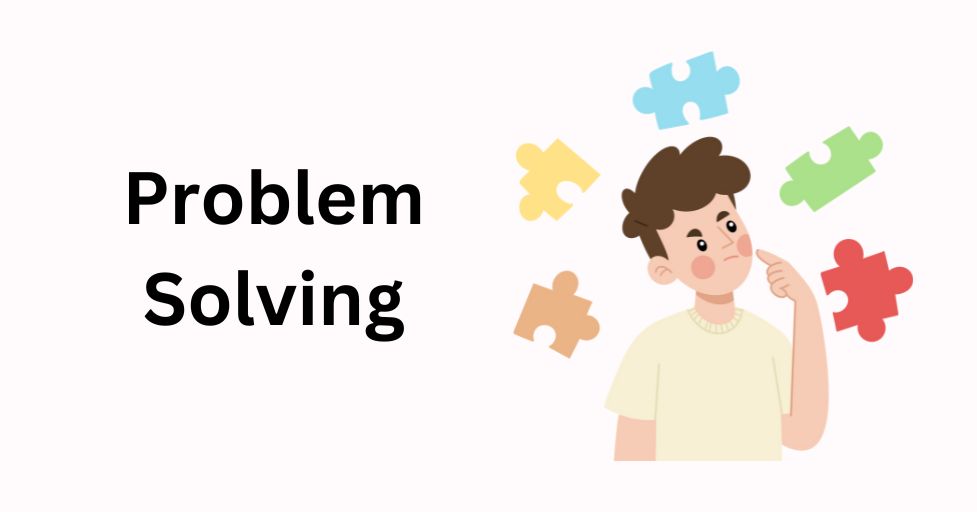
Let’s talk about the world of problem-solving, where we turn our little boundary-testers into mini-Einstein’s of decision-making. In the next few paragraphs we will discover how It is important to encourage our kids to find solutions to their own problems, guide kids in understanding the consequences of their choices, and faster critical thinking and decision-making skills when it comes to setting boundaries for kids.
Encourage children to find solutions to their own problems
According to a study in the Journal of Child Development, children who are regularly encouraged to solve their own problems show a 40% increase in self-confidence by age 10. That’s like giving your kid a superpower cape that actually works!
So, how do we nurture this problem-solving prowess? It’s all about asking the right questions. Instead of swooping in to fix everything (I know, it’s tempting). I remember wanting to solve all of my kids’ problems when it seemed like they weren’t capable of solving their own. But kids are smarter than we give them credit for.
Try this: “Hmm, that’s a tricky situation. What do you think you could do about it?” It’s like handing them a mental toolkit and saying, “You’ve got this, kiddo!”
Remember, the goal isn’t to leave them floundering. It’s about guiding them towards their own solutions. And trust me, the pride on their face when they figure something out on their own? Priceless. It’s like watching a lightbulb moment in real-time!
Guide kids in understanding the consequences of their choices
Now, let’s talk about consequences. No, not the “go to your room” kind – I’m talking about the natural cause-and-effect of choices.
Here’s a trick I love: the “what if” game. When your child is facing a decision, ask them to play it out. “What if you choose to spend all your allowance on candy today? How might you feel tomorrow when you want to buy that toy you’ve been saving for?” It’s like teaching chess – helping them think several moves ahead. They will learn so much for the “what if” game.
A study by the American Psychological Association found that children who regularly discuss consequences with their parents show a 35% improvement in impulse control. The “what if” game is a perfect way for children to learn impulse control for kids.
Foster critical thinking and decision-making skills
Last but definitely not least, let’s dive into the world of critical thinking and decision-making. These skills are like the Swiss Army knife of life – versatile, valuable, and oh-so-handy in a pinch.
One of my favorite techniques is the “pros and cons” list. It’s not just for adults deciding on job offers! When your child is torn between two options, help them jot down the good and not-so-good points of each.
Research from Stanford University shows that children who are taught critical thinking skills from an early age are 60% more likely to become innovative problem-solvers as adults. We’re not just raising kids; we’re raising future world-changers!
But remember, it’s not about making perfect decisions every time. It’s about the process. Celebrate their efforts in thinking things through, even if the outcome isn’t ideal. After all, some of life’s best lessons come from our not-so-great choices (I’m looking at you, neon scrunchies of the ’90s).
Encouraging solution-finding, understanding consequences, and fostering critical thinking will help your kids in the world of natural consequences.
Remember, every problem is an opportunity for growth, every mistake a chance to learn. Who knows? Your little one might just solve the world’s next big challenge. No pressure, though – figuring out how to make vegetables appealing is achievement enough for now!
Using Positive Time-Out Techniques

Let’s talk about the T-word: Time-outs. But wait! Before you roll your eyes and think, “Oh great, another lecture on putting kids in the naughty corner,” I’m here to flip the script on this classic parenting move. We’re diving into the world of positive time-outs, and even time-ins, and trust me, it’s a game-changer!
Implement calm-down corners or peace areas
First up: the calm-down corner. No, it’s not a boring spot where fun goes to die. Think of it as a cozy retreat for overwhelmed little minds. Picture this: a soft bean bag, some squishy stress balls, maybe a lava lamp for good measure. It’s like a spa day for your kid’s emotions!
According to a study in the Journal of Child Psychology, children who have access to a designated calm-down area show a 45% reduction in emotional outbursts. That’s like having a mute button for tantrums!
Remember, it’s not about banishing kids to this space. It’s about creating a safe haven they can choose to visit when emotions run high. The special needs young adults I work with love these calm places and independently go to them when they need a few minutes to calm down. They will always come back to class or the group after just a few minutes. I’ve never been more impressed by their emotional intelligence!
Teach self-soothing and emotional regulation techniques
Now, let’s talk about emotional regulation. It gives kids the ability to combat tantrums and meltdowns. And the best part? These techniques work for grown-ups too (hello, rush hour traffic)!
Start with simple breathing exercises. The “balloon breath” is a favorite in our house and in the classroom – breathe in deep, puff out your cheeks, then slowly let the air out like deflating a balloon. Repeat that several times. I do it more often than I realize. During a stressful moment, my students will often ask me what is wrong. Then I realize I am doing a breathing exercise. I will just say, “I’m doing my breathing balloon.”
Research shows that children who learn self-soothing techniques early on are 50% more likely to handle stress effectively as adults. We’re not just solving today’s meltdown; we’re prepping them for future board meetings and in-law visits!
Remember, consistency is key. Practice these techniques during calm times, so when the emotional storm hits, your kid has a trusty umbrella ready to go.
Use time-outs as opportunities for reflection, not punishment
Lastly, let’s reframe how we view time-outs. Forget the old school “sit here and think about what you’ve done” approach. We’re turning time-outs into time-ins – opportunities for reflection and reconnection.
Instead of sending your child away, invite them to sit with you. This is called a time-in. Ask questions like, “What were you feeling when that happened?” or “How could we handle this differently next time?” You are acting as a detective and a life coach rolled into one! When we learn what causes these meltdowns, we know how to help lessen those incidents.
Here’s a quote that changed my perspective: “Children do better when they feel better.” – Jane Nelsen, author of Positive Discipline. Time-ins are all about helping kids feel better so they can do better.
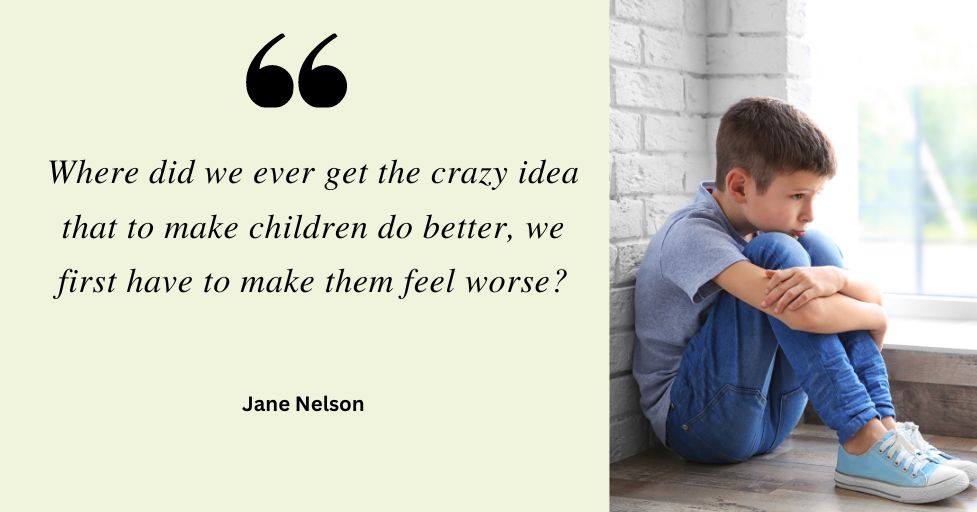
And the results speak for themselves. A study in the American Journal of Parenting found that families who use reflective time-ins instead of punitive time-outs report a 60% improvement in parent-child communication.
So turning meltdowns and time outs into teachable moments with calm-down corners, self-soothing techniques, and reflective time-ins Remember, it’s not about perfection. It’s about progress, connection, and growing together.
Now, who’s ready to turn their next family squabble into a masterclass in emotional intelligence? (Don’t worry, I won’t tell if you need to use these techniques on yourself first. I know I do.)
Modeling Boundary-Setting Behavior
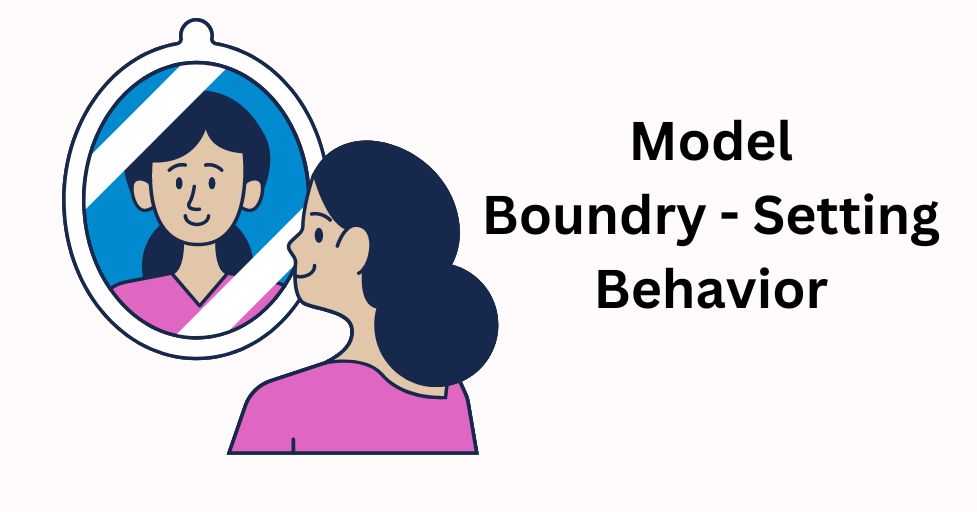
Alright, it’s time for some real talk. We’ve covered how to set boundaries for our kids, but here’s the million-dollar question: Are we walking the walk? Because let me tell you, our little ones have a superpower that puts Superman to shame – the ability to spot hypocrisy from a mile away!
Demonstrate and respect your own boundaries
According to a study in the Journal of Family Psychology, children who regularly observe their parents setting healthy boundaries are 70% more likely to develop strong boundary-setting skills themselves. That’s like giving your kid a Ph.D. in personal limits without the student loans!
Here is a good setting boundaries activity to do in front of your kids: It starts with our daily interactions. Next time your chatty neighbor catches you when you’re running late, try this: “I’d love to chat, but I need to get going. Can we catch up this weekend instead?” Boom! You’ve just modeled polite but firm boundary-setting.
It’s not just about saying “no.” It’s about showing our kids that it’s okay to have limits, to value our time and energy, and to communicate those needs clearly. It’s a great way to teach your kids “How to Adult”.
Show respect for others’ boundaries in daily interactions
Now, let’s flip the script and talk about respecting others’ boundaries. Because boundary-setting isn’t a one-way street – it’s more like a complex traffic system where everyone needs to follow the rules for things to flow smoothly.
Try this: Next time your kid says they need some alone time, resist the urge to hover (I know, it’s hard!). Instead, say something like, “I respect that you need space. I’ll be in the kitchen if you need me.” That is the ultimate example of boundary respect!
Here’s a quote that really hits home: “Respect for ourselves guides our morals; respect for others guides our manners.” – Laurence Sterne. By showing respect for others’ boundaries, we’re teaching our kids the delicate dance of social interactions. It’s like giving them the cheat codes for building healthy relationships!
Practice self-care to reinforce the importance of personal boundaries
Last but definitely not least, let’s talk self-care. And no, I don’t just mean bubble baths and face masks (though those are nice too!). I’m talking about the kind of self-care that says, “My needs matter, and I’m going to prioritize them.”
Picture this: You’re in the middle of your workout when your kid asks for help with homework. Instead of dropping everything, you say, “I’ll be happy to help you in 20 minutes when I’m done exercising.” Congratulations! You’ve just modeled that taking care of yourself isn’t selfish – it’s necessary.
And get this – a study by the American Psychological Association found that children of parents who regularly practice self-care are 55% more likely to develop strong emotional regulation skills. It’s like we’re giving our kids an emotional toolkit just by taking care of ourselves!
Remember, self-care isn’t just about bubble baths and spa days. It’s about saying “no” to overcommitment, taking time for activities that recharge you, and showing your kids that your needs matter too. It’s like putting on your own oxygen mask before helping others – you can’t pour from an empty cup!
Demonstrating healthy boundaries, respecting others’ limits, and prioritizing self-care is your toolkit for teaching boundary-setting through example. Remember, our kids are watching us closely. Let’s give them a show worth watching!
Conclusion for Setting Boundaries for Kids:
Whew! We’ve covered a lot of ground, haven’t we? Setting boundaries with positive discipline isn’t just about rules – it’s about creating a loving, respectful environment where your kids can thrive. Remember, consistency is key, and it’s okay to adjust your approach as you go. By implementing these strategies, you’re not just avoiding tantrums (though that’s a nice bonus!); you’re helping your children develop essential life skills. So, take a deep breath, trust the process, and get ready to see amazing changes in your family dynamics. You’ve got this, super parent!
FAQs for Setting Boundaries for Kids in 2024 Using Positive Discipline:
- Q: What is positive discipline and how is it different from traditional punishment?
A: Positive discipline focuses on teaching and guiding kids with respect, rather than using punishment. It’s about helping children learn from their mistakes and develop self-control, instead of just following rules out of fear. Think of it as coaching, not penalizing. - Q: How do I set boundaries without seeming mean or controlling?
A: Use clear, age-appropriate language to explain your expectations. Offer choices within those boundaries to give kids some control. Remember, boundaries aren’t about being mean – they’re about keeping kids safe and teaching them responsibility. Stay calm and consistent. - Q: What should I do when my child keeps testing boundaries?
A: Stay calm and restate the boundary clearly. Remind them of the consequences, but avoid getting into power struggles. Acknowledge their feelings while standing firm. Remember, testing boundaries is normal – it’s how kids learn about their world. - Q: How can I teach my child to respect others’ boundaries?
A: Model respect for others’ boundaries in your own behavior. Discuss how different people have different comfort levels. Encourage your child to ask before touching or borrowing things. Praise them when they show consideration for others’ space and feelings. - Q: At what age should I start setting boundaries for my child?
A: Start early! Even toddlers can understand simple boundaries. As kids grow, adjust your boundaries to match their developmental stage. Remember, boundaries provide a sense of security and help kids learn self-control. It’s never too early to start teaching these important skills.
GET FREE ACCESS TO OUR LIBRARY OF FREE PRINTABLES AND RESOURCES!
Enter Your Name and Email for FREE Access to our Library of FREE Home and Family Printables Series!

